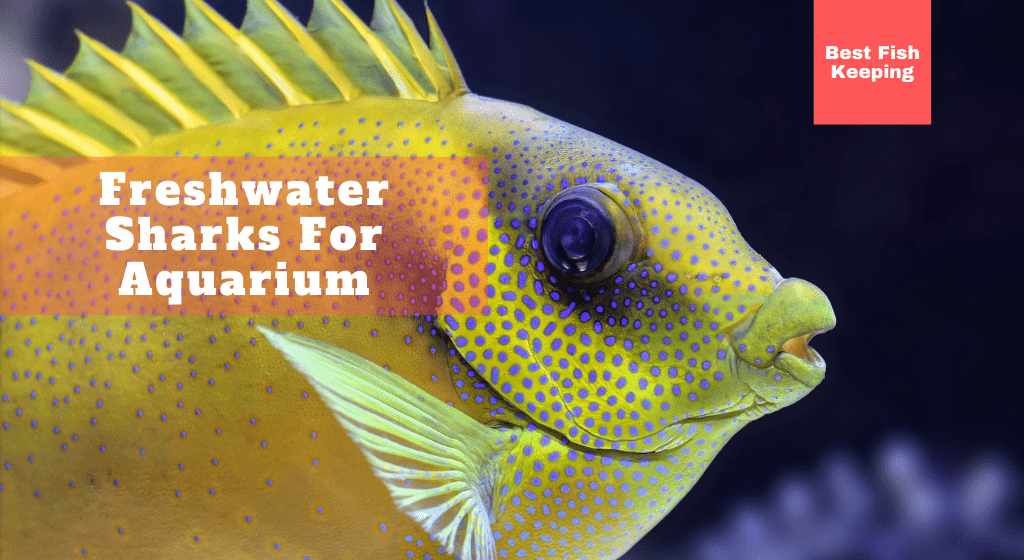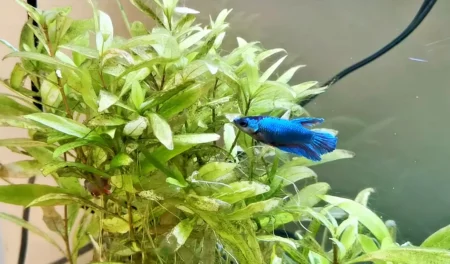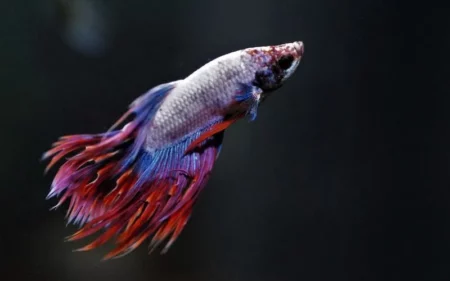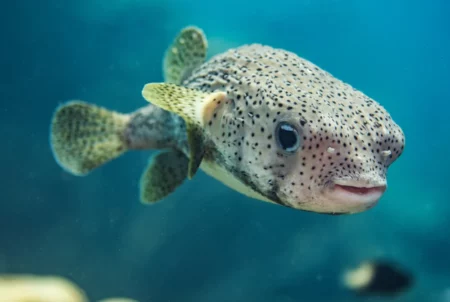One of the most famous pets is the freshwater shark for aquariums. These sharks are commonly mistaken for real sharks that we often find in deep blue oceans. Most people are enjoying keeping their pets at home. Having an aquarium is the second most popular hobby in the US because it has many benefits tagged.
Everyone needs to know what types of freshwater sharks are available in the market. We need to be well aware of the facts about keeping freshwater sharks in aquariums and the benefits of being at home.
Overview
- Name: Freshwater Shark
- Scientific Name: Carcharhinus leucas
- Origin: Southeast Asia and Africa
- Size: 5 to 13 inches
- Tank Size: Need 20+ Gallon
- PH Level: pH 6-8
- Water Temperature: 24-28°C/75-82°F
Most freshwater sharks belong to the Pangacidae family and Cyprinidae family. Freshwater sharks are native to Southeast Asia, Africa, Central America, and China. Although most species sold today are produced on commercial fish farms. Albino species have been obtained by selective breeding. Some of the most famous and common freshwater sharks for aquariums are:
- Bala Shark
- Golden Shark
- Flying Fox Fish
- Red-tailed Shark
- Chinese High Fin Shark
- Rainbow Shark
- Black Shark minnow
- Harlequin Sharks
- Iridescent Shark
- Labeo Boga
Types Of Freshwater Sharks for Aquarium
Here we are going to tell you a bit about some types of Freshwater sharks for aquariums.
Golden Shark:

Golden sharks are extraordinarily beautiful. They essentially feed on algae. They are 6 inches long and prefer to live in groups of 3 or more at full maturity. As for their nature, they are friendly sharks known in nature. They love plants and like to stay in school. So we recommend keeping them in a 55-gallon tank.
- Water Temperatures: 72 to 79 degrees Fahrenheit
- Suitable pH: 6.8 to 8.0
In their natural habitat, they live in fast-flowing rivers, so it is recommended to have a strong filter in their tank. They are very active freshwater shark species and are often seen jumping.
Flying Fox Fish:
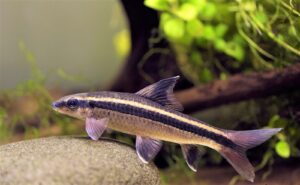
The Flying Fox is a very friendly, algae-eating shark. This shark also prefers to live in schools of about 3 to 5, very active by nature. As its name implies, the flying fox is often seen jumping on the surface of the fish tank. Thus, they must be kept in a tightly sealed aquarium. They prefer a pH between 6.8 and 8 and a temperature between 72- 79 degrees Fahrenheit.
Chinese High Fin Shark:
Chinese High Fin Banded Sharks have a peaceful nature and are very large when they are fully mature. They can grow too long and are thus more suitable in a pond than in a fish tank.
Even a 200-gallon tank is not entirely possible to live for them. They are majestic to look at. They need a water temperature of 55 to 70 degrees Fahrenheit and a pH between 6.0 and 7.5. He could face up to 25 years in prison. Hi, Fin is an obscure omnivore and will eat almost anything from dry food to live blood worms.
Iridescent Shark:
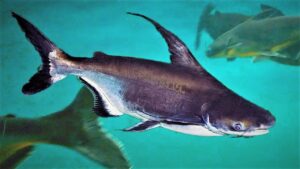
Iridescent sharks are incredibly peaceful and have a tranquil nature. This is one thing that makes them a kind of unsuitable for a home aquarium. The amazing fact is that, when fully grown, in the maximum condition, they can grow to lengths somewhere between 3 and 4 feet. They are huge. This means they will need a tank with a capacity of 200+ gallons.
Moreover, you must keep in mind that their size does not prevent them from being highly active, and therefore, you must make sure that their tank is properly sealed. They are an omnivorous, mid-water swimmer, and not shy. These sharks are very bright in color.
Harlequin Shark:
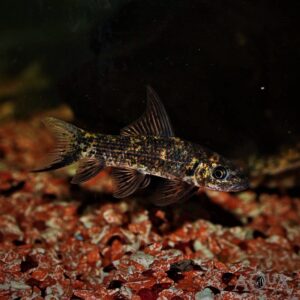
Harlequin shark is as enjoyable as its name suggests. Very bright and colorful, Harlequin sharks are highly aggressive towards their species and towards any similar species.
You must keep in mind that young souls have a brighter look than mature ones. At maturity, they can measure up to 6.5 inches in length. Considering a 50 to 55-gallon tank for these small sharks for the home aquarium is well suited for them.
Select the temperature of water between 80 to 83 degrees Fahrenheit. These sharks prefer extremely well-planted tanks that help them live a solitary life.
Violet Blushing Shark:
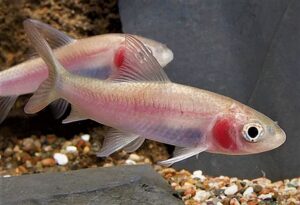
The violet blushing shark closely resembles a red-tailed shark with a slight difference in appearance. This freshwater shark body is a little more elongated which gives a stunning look. Although not as vibrant as some of the others on their color list, their size makes them suitable for a home aquarium.
At maturity, it can be as long as 12 inches. They prefer a pH between 6.6 and 7.9 and temperatures between 68- and 77-degrees Fahrenheit. It’s best to put them in a 130+ gallon capacity tank. It is a bottom feeder and prefers to feed dry fish and frozen blood worms.
Freshwater Sharks Care Guide
Having a pet freshwater shark at home can be a lot of fun and enjoyable. It can reduce the stress felt throughout the working day. Studies show that taking care of fish at home is an excellent way to grow and uplift a person’s spirit. It helps us to be more relaxed in times of trouble.
Aquarium Size:
The size of the aquarium also varies depending on your preference. It is important to know which size is best for your home or office, as not all dimensions are suitable for your location. Glass-made and acrylic aquariums are the two most popular types.
A young Chinese high-fin banded shark can survive in a 55-gallon tank, but after a year, they will need at least a 300-gallon tank. They must transfer to a pond than in more water and large space. If they have no place to grow, their chances of survival are slim.
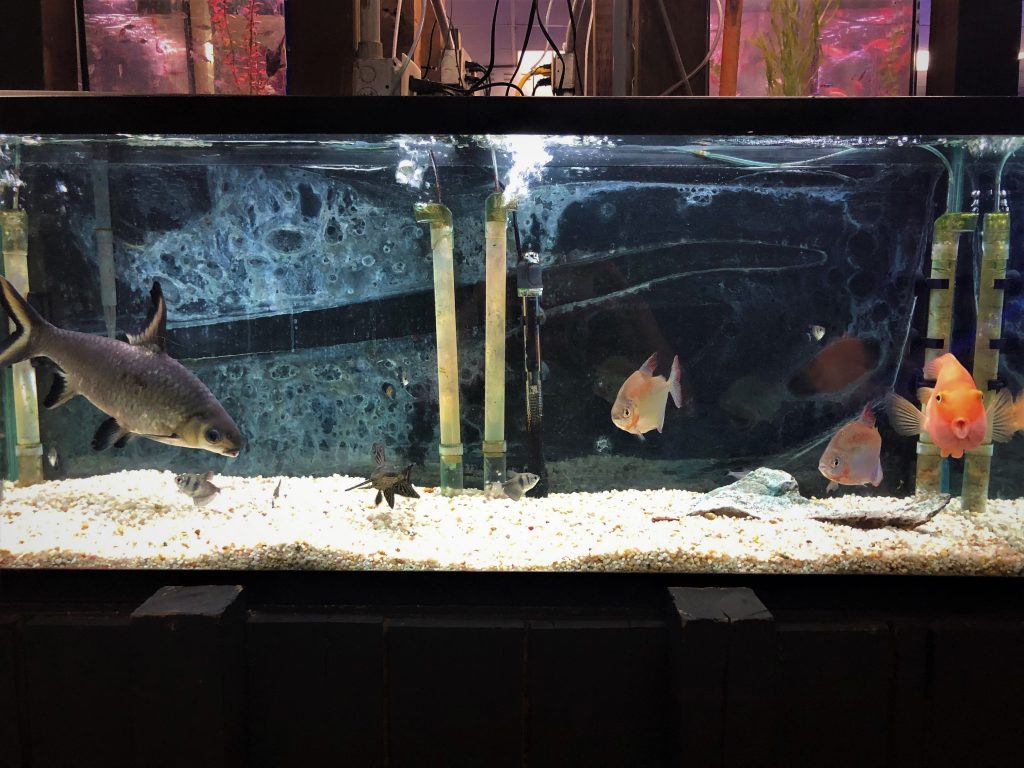
Care:
Never forget to learn and understand the food for freshwater sharks in aquariums. The most important thing you can do for your freshwater sharks is to maintain the water parameters mentioned above. Keep the water clean and clear. Don’t put any other fish species as tank mates. They can not adjust to them and will start fighting.
Diet:
Most sharks are omnivorous. The most recommended foods for them are algae wafers and dry blood worms. They thrive on various other foods, including Flakes, tropical granules, bottom-feed tablets, and shrimp particles. Frozen and live foods can be served as treats to enhance growth and color. These facts are just as important in starting your freshwater shark aquarium, whether it’s in the office or at home.
Diseases:
All freshwater shark fishes are sensitive to swimming urinary tract infections, dizziness, and bacterial and fungal infections. Proper water maintenance will prevent most of these problems.
Breeding:
- Trying to breed Harlequins is strongly encouraged. They have a strong hate for each other, so they will not tolerate sharing a tank.
- Trying to breed Flying Fox Sharks in your home aquarium is strongly discouraged. Because of the difficulty in creating the conditions necessary for breeding.
- Iridescent Sharks migrate during the spawning season. It is impossible to capture these sharks, so do not try this on your home fish.
- Colombian sharks breed in sea salt water, and holding their fry is difficult until they reach freshwater. Since it is impossible to create those conditions in your home tank, it is bad to try to breed Colombian sharks in your fishery.
Healthy Suggestion
Keeping an aquarium is so beneficial to us because of its live fish, colorful decorations, and water bubbles. Doctors have long recognized aquariums as therapeutic. Also, interior design, including an aquarium, brings harmony and peace to offices and homes.
Freshwater sharks aquarium should be best placed in the busiest part of the house so that everyone can enjoy it. Placing an aquarium and fish at home can attract good vibes and bring good luck to its owner. Everyone can easily fall in love with her
